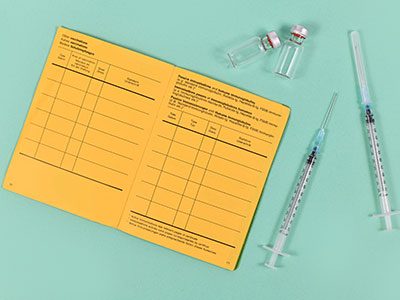My colleagues and I are often asked about developmentally-appropriate gifts for young children. While the ideal gift depends on a child’s preferences, interests and developmental stage, there are a few guidelines that can help get you going in the right direction.
If you are gift-shopping for a child you know well, a good starting point is thinking about what type of play they currently enjoy. For example, if the child generally engages in container play (i.e. filling and dumping), this means that they’re starting to understand how two separate objects go together. The next level of this type of play could be stacking rings on a rod or a simple puzzle.
Developmentally-appropriate gifts that develop language
While infants and young toddlers generally engage in physical forms of play, older toddlers and preschool-aged children tend to engage in more verbal forms of play. Toys that develop language usually involve people – like dolls, action figures and dollhouses.
Even the most simple play routines with dolls are language-based, such as feeding a doll or putting a doll to bed. It is a lot harder to engage in meaningful pretend play or language-based play with toys that aren’t people. For example, children will push a toy car around, but they’re less likely to narrate their actions or develop more expansive, imaginary scenarios with such toys. When we see toddlers with language delays in our clinic, we often encourage parents to help their child engage in more verbal forms of play.
Gifts with potential negative impacts on development of play skills
One of the biggest pitfalls of gift-giving for infants and toddlers is that most toys marketed for these children are electronic, making it hard to find toys for young children that do not have bright lights or loud sounds. We strongly discourage parents from providing their young children with such toys, as they can negatively impact the development of age-appropriate play skills, language skills and attention.
When children play with electronic toys, less is required from them – all the child has to do is press a button or swat at a keyboard and the toy lights up or plays music. Such toys do not encourage or require children to use their hands (or their brains) in order to enjoy the toy. Instead, the toys do all the work and the children are simply stimulated by the lights and sounds. To make matters worse, children who are exposed to lots of electronic toys show very little interest in toys that do not feature lights and sounds, as these toys become ‘boring’ by comparison.
Things to keep in mind when buying gifts
Here are a few suggestions to keep in mind when buying gifts for an infant or a toddler:
- It does not require batteries.
- It does not rely on bright colors/sounds to make it ‘interesting.’ A toy should be interesting to a child because of how he or she can use it.
- Depending on the child’s age:
- the infant has to use her/his hands.
- the toddler has to use her/his language.
- the preschooler has to use her/his imagination.
- Avoid ‘pre-academic’ toys for toddlers and preschoolers. They should learn language that they can use to communicate before worrying about their ABCs and 123s
 https://riseandshine.childrensnational.org/wp-content/uploads/2025/03/little-boy-with-rash-feature.jpg
300
400
webteam
https://riseandshine.childrensnational.org/wp-content/uploads/2017/11/childrens_riseandshine_logo.jpg
webteam2025-03-24 17:38:572025-03-25 10:11:16Winter rash: How to keep your child’s skin healthy during brittle winter months
https://riseandshine.childrensnational.org/wp-content/uploads/2025/03/little-boy-with-rash-feature.jpg
300
400
webteam
https://riseandshine.childrensnational.org/wp-content/uploads/2017/11/childrens_riseandshine_logo.jpg
webteam2025-03-24 17:38:572025-03-25 10:11:16Winter rash: How to keep your child’s skin healthy during brittle winter months





















Leave a Comment
Want to join the discussion?Feel free to contribute!